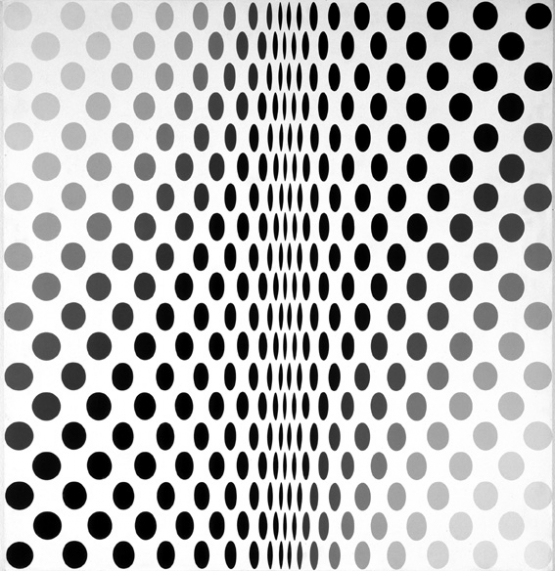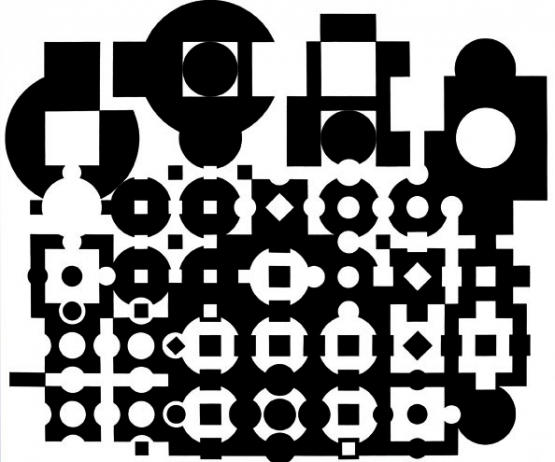Kinetic art is based, above all, on a utopian vision: that of bringing art into everyday life. In fact, Kinetic art was one of the movements that came closest to achieving this goal thanks to its influence on society as a source of inspiration in fields as diverse as the fashion industry, architecture, the media and graphic art. The public had the possibility to move inside artworks, to interact with them, apprehend them, lose themselves in them and combine with them. As a founding element of the movement, the public was transformed into the artist. In effect, Kinetic art needs the observer’s eyes in order to “live” and in order to release all of its meaning, all of its expression: if there is no human contact, however fleeting, no movement is produced.
At the origins of this utopian vision lay a fundamental event: the Le Movement exhibition at the Galerie Denise René in 1955. The main instigator was Victor Vasarely, several of whose own works were shown. The exhibition represented a central moment in the history of post-war art. Works by Marcel Duchamp and Victor Vasarely, pioneers of the movement, were brought face to face with the creations of younger artists like Yaacov Agam, Pol Bury, Jesús Rafael Soto and Jean Tinguely. The works shown were both an allegorical and true representation of the movement. It gained recognition of sorts ten years later with the The Responsive Eye exhibition at the Museum of Modern Art in New York and it was in reference to this exhibition, in an article published in the Times, that the English art critic Lawrence Alloway coined the term Op art. This was, in any case, Kinetic art’s acme; for a brief moment, there was a conviction that it could dethrone Pop art. But this high point was also its swansong. These two crucial moments were documented in films directed by Pontus Hulten and Robert Breer (Le Mouvement, 1955) and Brian de Palma (The Responsive Eye, 1966), which are included in this exhibition.
Besides the names already mentioned, also featured in the exhibition are works by Bridget Riley, Pierre Rovère, Paul Sharits, Julio Le Parc, Martha Boto, Karl Gerstner, Hugo Demarco, Nicolas Shöffer, Eusebio Sempere, Ángel Duarte, Carlos Cruz Diez, amongst others, and also the Portuguese artists René Bertholo, Eduardo Nery, António Pedro, Nadir Afonso and Artur Rosa, comprising a total of thirty artists and some sixty artworks.













